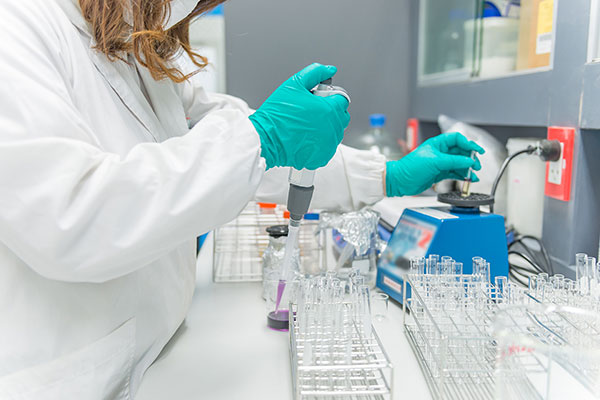Specific Fluorescent Stains
- DNA Stains
- Fluorescent Enzyme Substrates
- Fluorescent Proteins & Nucleotides
- Laser Dyes
- Non-Functionalized Dyes
- PCR & Molecular Biology
Customized Fluorescent Reagents
One-stop Solution for Your Research
BOC Sciences offers a one-stop solution for fluorescent reagents, providing custom synthesis, modification, and large-scale production services. Our comprehensive portfolio includes high-purity fluorescent dyes, probes, and labeling reagents for research and industrial applications, ensuring superior performance and reliability.
Explore More

Background
Introduction
Specific fluorescent stains refer to fluorescent reagents with specific functions, which can covalently or non-covalently combine with substances with weak or no fluorescence to form fluorescent complexes, so as to play specific roles.
Structural feature
Specific fluorescent stains often have the following structural features:
- Structures with large conjugated π bonds. In general, the larger the conjugated system of the specific fluorescent stains, the easier the delocalized π electrons are excited to generate fluorescence.
- Plane structures with rigidity. The molecules of specific fluorescent stains with high fluorescence efficiency are mostly planar and have certain rigidity. Strengthening the rigid structure of molecules is beneficial to enhance the fluorescence intensity of specific fluorescent stains.
- π, π1* types with the lowest singlet electronic excited states. π, π1* types of the lowest singlet excited state belong to the transition allowed by electron spin, and the fluorescence intensity is large.
- Substituting groups as electron donor groups. The excited states of specific fluorescent stains with substituents as electron donating groups are usually generated by the transfer of n electrons. Because the electron cloud of n electrons is almost parallel to the π orbital on the aromatic ring, they actually share the conjugated π electronic structures and expand their conjugated double bonds system, so they usually have good fluorescence characteristics.
Application
- Application in drug development
- Application in environment
- Application in genetic testing
Some kinds of specific fluorescent stains can be used in the field of life science. For example, cell membrane fluorescent probes can make cancer stem cells glow, which can not only make the location of cancer stem cells clear, but also curb the proliferation of cancer stem cells. The cancer stem cells that combine with these specific fluorescent stains and emit light will not emit light again after apoptosis, so the location and number of residual cancer stem cells in the body can be determined. Realizing the "visualization" of cancer stem cells will help to clarify the true face of cancer stem cells and promote the development of new cancer therapeutic drugs.
Some kinds of specific fluorescent stains can be used for environmental monitoring. For example, mercury is one of the most common toxic metals in the environment. It is easy to penetrate the biofilm and will seriously damage the central nervous system and endocrine system of people. Laser dye can be used as a fluorescent sensor for mercury ion probe in aqueous solution. The fluorescent stain reacts irreversibly with mercury ions to form a fluorescent compound, which has fast response to mercury ions and high selectivity and sensitivity.
Luciferase can catalyze the oxidation of luciferin to oxidized luciferin, which will emit biological fluorescence in the process of luciferin oxidation. Then the bioluminescence was released during the oxidation of fluorescein can be measured by a fluorescence meter. Luciferin and luciferase, a bioluminescence system, can detect gene expression very sensitively and efficiently. It is a detection method to detect the interaction between transcription factors and DNA in the promoter region of target genes.
Resources

- Hoechst Dyes: Definition, Structure, Mechanism and Applications
- Mastering the Spectrum: A Comprehensive Guide to Cy3 and Cy5 Dyes
- Fluorescent Probes: Definition, Structure, Types and Application
- Fluorescent Dyes: Definition, Mechanism, Types and Application
- Coumarin Dyes: Definition, Structure, Benefits, Synthesis and Uses
- BODIPY Dyes: Definition, Structure, Synthesis and Uses
- Cyanine Dyes: Definition, Structure, Types and Uses
- Fluorescein Dyes: Definition, Structure, Synthesis and Uses
- Rhodamine Dyes: Definition, Structure, Uses, Excitation and Emission
- Unlocking the Power of Fluorescence Imaging: A Comprehensive Guide
- Cell Imaging: Definitions, Systems, Protocols, Dyes, and Applications
- Lipid Staining: Definition, Principles, Methods, Dyes, and Uses
- Flow Cytometry: Definition, Principles, Protocols, Dyes, and Uses
- Nucleic Acid Staining: Definition, Principles, Dyes, Procedures, and Uses
- DNA Staining: Definition, Procedures, Benefits, Dyes and Uses
- Cell Staining: Definition, Principles, Protocols, Dyes, and Uses
- Ion Imaging: Definition, Principles, Benefits, Dyes, and Uses
- Fluorescent Labeling: Definition, Principles, Types and Applications
Online Inquiry

